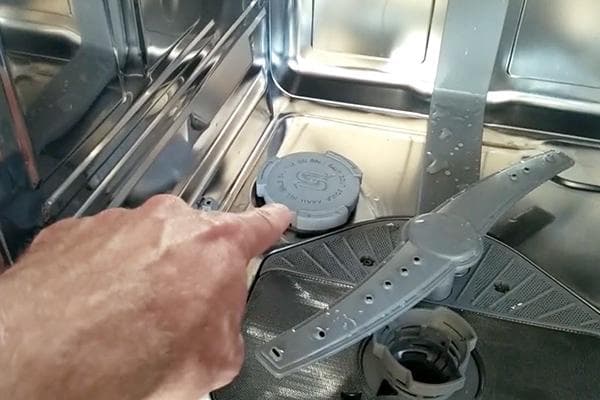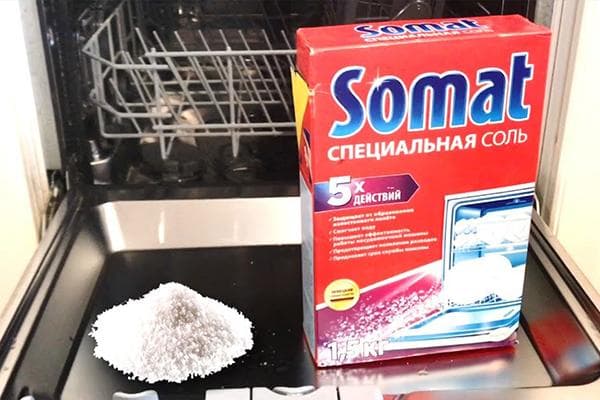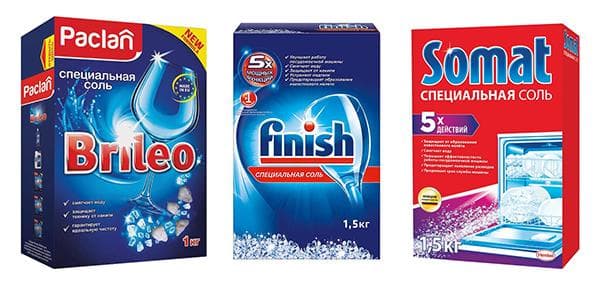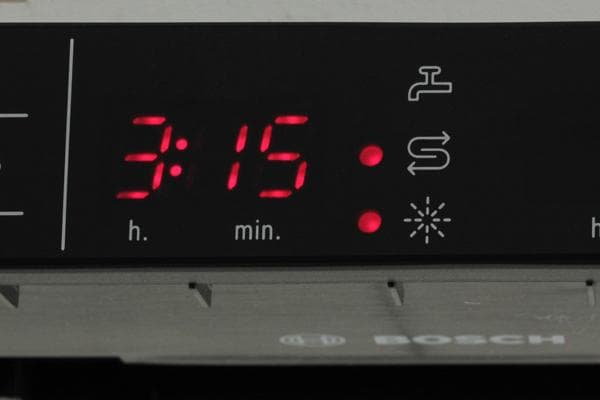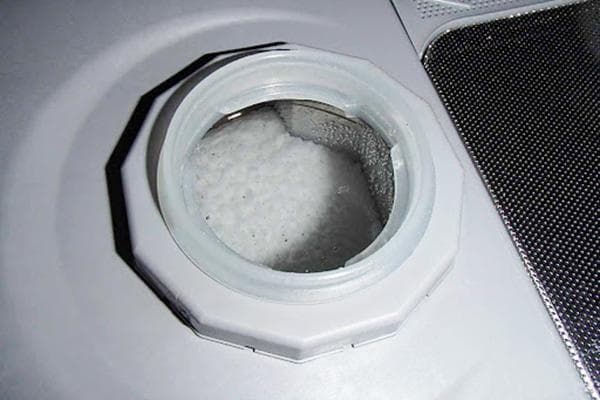How to put salt in the dishwasher correctly - all the subtleties
A dishwasher is gradually ceasing to be a luxury. However, many people still find it difficult to care for. In particular, you can often hear the question: how to put salt in the dishwasher? The procedure is actually simple. There is a special compartment at the bottom of the machine. You need to unscrew the lid and add the required amount of product through the funnel.
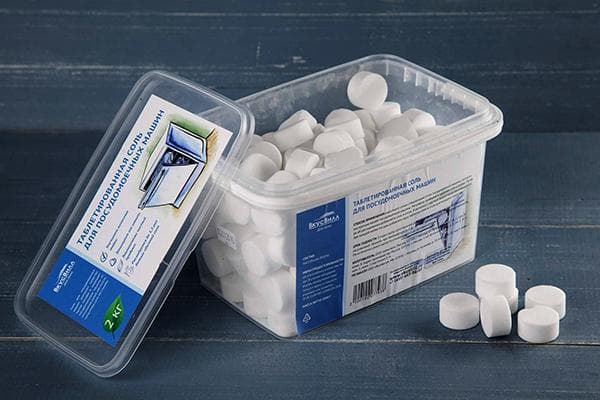
Where is the salt compartment?
The required tank can be seen with the naked eye if you open the car door. Notice the gray round lid on the bottom. Where to pour salt in the dishwasher is clearly shown in the photo:
To load, you need to unscrew the cap and fill the tank through the funnel. How much salt will fit in it depends on the dishwasher model. You can find the relevant information in the instructions for the device. The compartment is filled almost completely.
Does your dishwasher need salt?
When purchasing a dishwasher, consultants tell you what care products will be needed. But why the dishwasher needs salt is often not explained or spoken in too “abstruse” phrases. It's actually simple.
We all know that a dishwasher heats water to 45–90 degrees. At this temperature, impurities contained in water form sediment. The device becomes covered with scale and soon breaks down. To protect device parts, manufacturers use an ion exchange filter. The main filter component is resin.It starts the process of exchanging heavy metal ions into lighter ones. As a result, they do not precipitate.
Over time, the ion exchange resin in the dishwasher filter loses its cleaning properties. To restore it, it is necessary to replenish sodium ions. For this purpose, salt is used - sodium chloride (NaCl).
Types of dishwasher salt
Special salt is available for dishwashers. It differs from the usual culinary form and composition. Dishwashers require almost pure 99.7% sodium chloride.
The form of salt is:
- coarse crystalline (granular);
- tableted.
Table salt contains less sodium chloride – 97%. The remainder consists of anti-caking agents, iodine, fine dust and other additives. They do not dissolve in water and can clog the filter mesh.
Popular brands and inexpensive analogues
New dishwasher owners are often confused and don't know what salt to use.
If price is not the issue, experienced craftsmen advise choosing products from trusted companies:
- Finish;
- Somat;
- Paclan Brileo.
It’s hard to say which salt is better. The listed products have approximately the same quality and price. On average, 1.5 kg of the substance will cost 200 rubles. Budget options cost from 70 to 100 rubles per 1 kg. But the reviews on them are not always good. Main complaints: uneconomical consumption, small crystals, dust, sediment.
To save money, you can purchase industrial salt in tablets. It is used for large ion exchange filters and chlorine generators for swimming pools. The composition is identical - 99.7% sodium chloride. It is sold in large 25 kg bags at a price of 500–550 rubles. It turns out about 20 rubles per 1 kg. The savings are significant.In addition, this volume of funds will last for 3–5 years, if not more.
The indicator lights up - it’s time to pour salt
The dishwasher itself signals when it is time to add sodium chloride to the filter. A red light on the panel lights up opposite the icon with arrows diverging in different directions:
Having noticed a signal, you need to take action.
How to add salt correctly:
- Open the dishwasher door and find the filter cover at the bottom.
- Unscrew and insert the funnel into the hole.
- Pour 1 liter of water.
- Pour in 0.7–1 kg of salt.
- We clean up everything that spills and spills out with a sponge.
- Screw on the lid.
The ion exchange resin recovery process is complete when the solution becomes homogeneous.
It is better to load the product immediately before using the dishwasher. During operation, the remaining brine solution will be washed away. Contact with metal is not advisable due to the risk of corrosion.
Questions and answers
Do I need to add salt to the ion exchanger when using universal tablets?
In most cases, yes. Universal tablets can soften water with a hardness level of up to 21 dH. In Europe, where most of the products are manufactured, this is quite enough. The water there is much softer, and 21 dH refers to very hard water. In Russia, the standards of rigidity are different. 21 dH is water of medium hardness. In many regions, including Moscow, the indicators are at the level of 30–33 dH.
How often should you put salt in the dishwasher?
Consumption depends on water hardness and frequency of use of the device. On average, 700 g lasts for 2–3 months. In regions with soft water, as well as when using universal “3-7 in 1” dishwasher tablets, salt consumption is reduced. It is added once every 6–8 months.
How to reduce product consumption?
If the tap water is soft or universal tablets are used, set the water hardness in the machine to “1” (the default level is “3” or “4”). Then the product is consumed in noticeably smaller quantities.
We'll tell you how to adjust the hardness using the Bosh SPS25f as an example. You need to turn on the device by pressing and holding button “A”, press “Start”. Hold both buttons until “H:00” appears on the screen. Release the buttons. Using the “C” button, set the desired level “H:01” or another. Click on “Start”.
Let's summarize. Salt is needed in the machine to restore the ion exchange resin in the filter. This filter traps heavy impurities and makes the water soft. This increases the efficiency of cleaning dishes, and the parts are reliably protected from scale and plaque.
You need to add salt regularly as soon as the indicator lights up red. The reservoir is easy to find inside the dishwasher, at the bottom. It is important to use special highly purified salt (sodium chloride 99.7%). Unscrew the lid and pour 0.7–1 kg of product through the funnel. It's simple!
